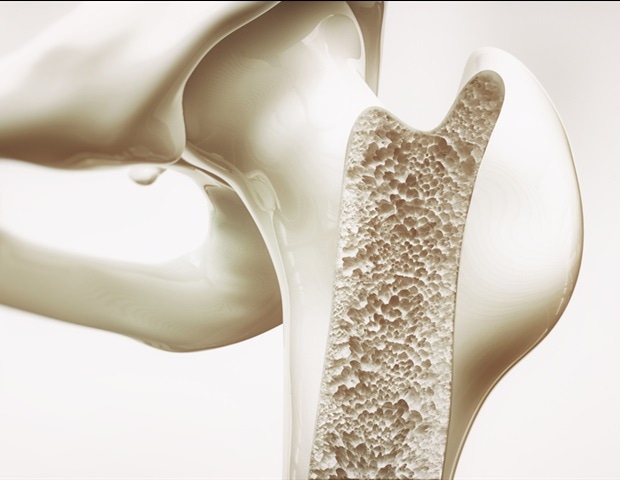
According to new research findings presented at the 2019 ACR/ARP Annual Meeting, methotrexate did not demonstrate superior efficacy over placebo for pain relief and function evolution at three and 12 months in patients with erosive hand osteoarthritis, but did significantly reduce the progression of joint damage over placebo and seems to facilitate bone remodeling in these patients.
Osteoarthritis (OA) is a common joint disease that most often affects middle-age to elderly people. OA is a disease of the entire joint, involving the cartilage, joint lining, ligaments, and bone.
It is characterized by the breakdown of the cartilage (the tissue that cushions the ends of the bones between joints), bony changes of the joints, deterioration of tendons and ligaments, and various degrees of inflammation of the joint lining (called the synovium).
No studies so far have evaluated the effect of methotrexate (MTX), a disease-modifying antirheumatic drug, in hand osteoarthritis. Researchers conducted this one-year prospective, monocentric, randomized, double-blind, placebo-controlled study to examine the drug's effect on pain and structural progression in patients with symptomatic erosive hand osteoarthritis.
Erosive hand OA poses problems in terms of pain, function, and disability, but especially given the lack of truly effective therapies. The natural evolution of erosive hand OA is characterized by a succession of erosive phases and remodeling.
These rearrangements suggest the involvement of pro-inflammatory cytokine cascades known to cause cartilage degradation and bone resorption.
In recent years, imaging data have confirmed the presence of inflammation in the joints of these patients. The clinical presentation and imaging data bring this entity closer to inflammatory rheumatism, such as rheumatoid arthritis and psoriatic arthritis.
These similarities have justified for some the use of treatments used in inflammatory rheumatism."
Prof. Christian Roux, head of the joint unit in the rheumatology department at Cote d'Azur University in France, and the study's lead author.
Sixty-four patients with erosive hand OA in the study were randomized into two groups: taking a dose of 10 mg of MTX per week or a placebo.
The study's primary endpoint was pain assessment at three months. Secondary endpoints were clinical features, including pain measured on a Visual Analogue Scale (VAS), radiographic features and magnetic resonance imaging (MRI) at 12 months.
At three months, there was no significant difference in the evolution in VAS pain score between both groups: the MTX group's mean decrease was 17.5 (from 28.4) and the placebo's mean decrease was 8.4 (from 25.2). Erosive joints progressed significantly more to a remodeling phase in the MTX group than the placebo group or 27 percent to 15 percent.
Joints with joint space loss appeared to be eroding less in the MTX group than in the placebo group, or eight percent to 29 percent. Interleukin-6 level and synovitis findings on MRI scans at baseline were found to be predictive factors for the erosive structural evolution of non-erosive joints.
According to the study's findings, while MTX did not demonstrate superior efficacy over placebo for improvement of pain and functional evolution at three and 12 months in people with EHOA, it did significantly reduce joint damage progression compared to placebo and seems to facilitate bone remodeling.
The presence of systemic and local inflammation at baseline predicted erosive progression.
The study does not demonstrate superior efficacy of MTX over placebo on pain and function in subjects with erosive hand OA. But probably it will be linked to a multifactorial origin of pain in these subjects such as mechanical or inflammatory pain."
It is possible that we have to treat earlier if we want to have an effect on pain. However, our results show a structural effect of the treatment that facilitates bone remodeling and seems to slow the erosive structural progression of digital osteoarthritis with a seemingly more pronounced effect in patients with early lesions.
I think this is a major point. The main complaint for people is the deformity linked to structural evolution in this disease. Our study's results should encourage new studies to be conducted."
Christian Roux
American College of Rheumatology






No comments
Post a Comment